Share
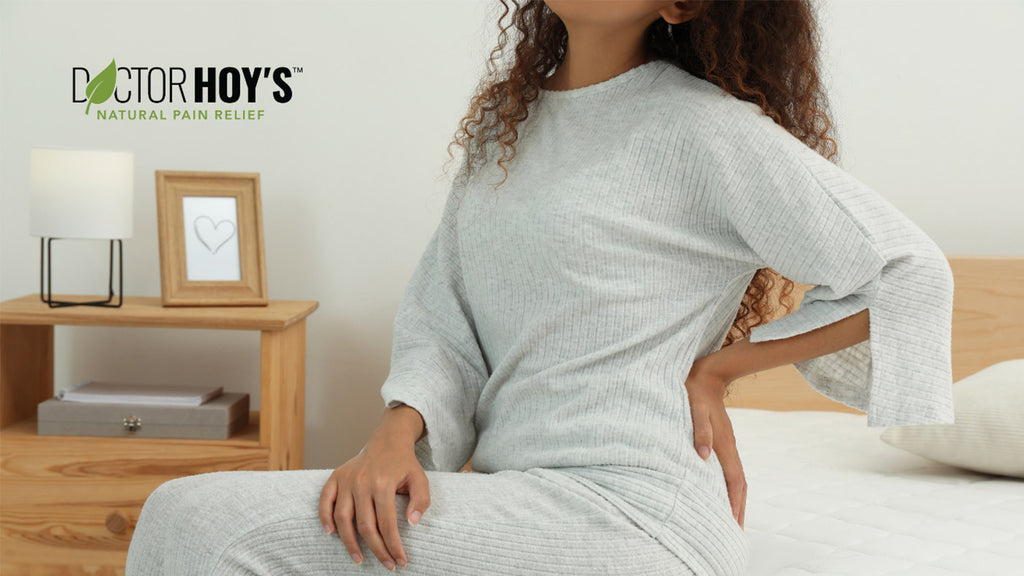
Tips & Sleeping Positions for Lower Back Pain Relief
Is lower back pain making it impossible for you to fall asleep at night, let alone stay asleep? The solution to getting a good night’s rest and relieving your lower back pain might be as simple as changing the way you sleep and your posture.
Poor sleep posture, or the position of the body when sleeping, directly affects spinal alignment which can lead to aching back pain and poor sleep quality. By knowing the best way to sleep with lower back pain and trying natural pain relief methods like Doctor Hoy’s® at bedtime, you can relieve your pain and finally get the sleep you need.

The Link Between Back Pain & Sleep Posture
The lower back is made up of a complex anatomy of structures that support most of your body’s weight. It plays an integral role in how we move from standing to walking and lying down. When you suffer from lower back pain, it’s no wonder you might struggle to sleep or get out of bed in the morning.
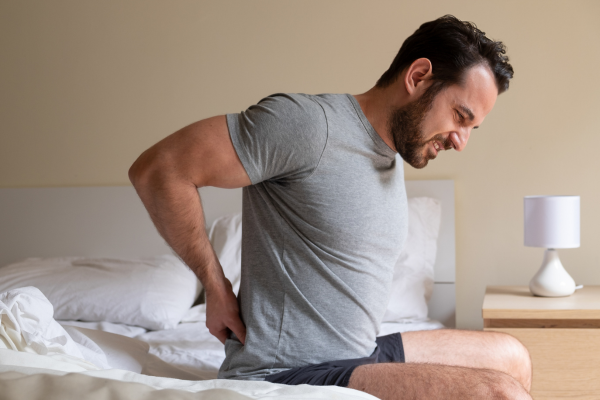
Sleeping with Bad Posture
Bad posture is a leading cause of back pain. Poor posture while sleeping increases pressure on the spine and surrounding muscles. This puts unnecessary strain and tension on your lower back, throwing it out of alignment and causing discomfort.
Sleeping in a neutral position supports good posture and healthy alignment to reduce strain while Doctor Hoy’s Natural Pain Relief Gel helps relieve pain from bad posture.
How Sleep Helps with Pain
Research shows that sleep disorders and severe lower back pain are closely related, often co-existing. People who experience more back pain often also have worse quality of sleep. Sleep is important because it gives our body the time it needs to perform essential functions for growth and healing.
When pain interferes with how much you should be sleeping, it can disrupt your body’s natural processes, impairing healing from inflammation, and heightening pain sensitivity by affecting our mood. Understanding how to relieve lower back pain while sleeping can help you sleep better and improve your overall health and happiness.
The Best Sleeping Position for Lower Back Pain
According to most medical and sleep professionals, the best sleep position for lower back pain is on your side with your knees slightly bent. This position takes pressure off your lumbar spine and supports neutral alignment.
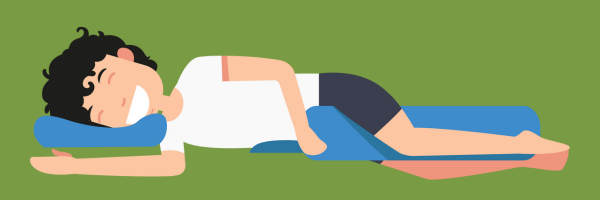
Here is how to sleep with lower back pain on your side:
- Lie down on your side
- Slightly bend your knees up toward your chest, but not in the fetal position
- Place a pillow between your legs at the knees to align the spine and hips
Alternative Sleeping Positions for Lower Back Pain
When you are used to falling asleep on your stomach or back, switching to your side may feel uncomfortable. Luckily, there are ways you can change your sleep position to improve alignment and reduce back pain.
Back Sleepers
If you sleep on your back, place a pillow under the back of your knees to help relax the lower back muscles and maintain the lumbar curve. Place a smaller pillow or rolled up towel under your waist for extra support. Make sure the pillow you sleep on provides comfortable, even neck support.
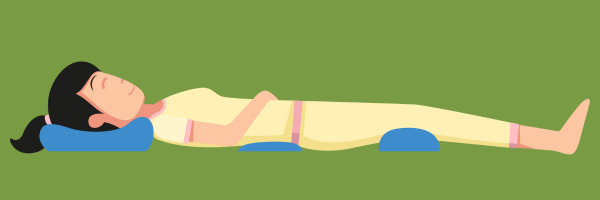
Stomach Sleepers
Sleeping on your stomach is the worst sleeping position for lower back pain because it puts the most strain on your lumbar spine. Minimize this strain with a pillow under your hips and lower stomach to prevent your back from sinking. Use a thinner pillow under your head to limit neck and upper back pain, too.
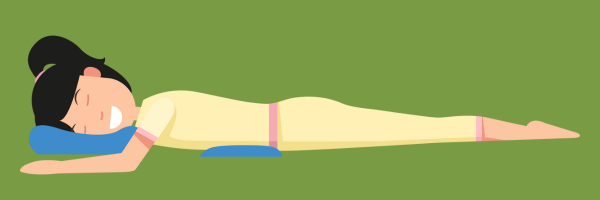
Tips for Sleeping with Lower Back Pain
After you’ve found a more supportive sleeping position that is best for lower back pain, there are a few more things you can do to improve your sleep habits and relieve discomfort, including:
- Avoid alcohol and caffeine. Alcohol helps some people feel sleepy, but it does not promote quality sleep. Caffeine too close to bedtime can make it hard to fall and stay asleep.
- Try a natural pain relief topical. Doctor Hoy’s Pain Relief Gel uses natural ingredients to provide effective, soothing relief from back pain. Use it at night before bed for fast acting back pain relief, or in the morning to reduce joint stiffness and muscle aches. Our roll-on pain relief gel is best for hard-to-reach areas.
- Practice meditation or yoga. Techniques that promote relaxation like yoga stretches, posture exercises, and meditating help relieve stress and put your mind and body in a restful, calm state.
- Block out distractions. When you wake up in pain, any distraction can make it hard to fall back to sleep. Avoid falling asleep with the television on and block out light or noise from outside with a sleep mask and earplugs.
- Change your mattress. If you’re in the market for a new bed, adjustable mattresses and medium-firm mattresses can help limit strain, improve alignment, and decrease lower back pain.

Sleep Better, Relieve Back Pain with Doctor Hoy’s
Changing your sleep posture and using Doctor Hoy’s natural pain relief topicals before bed is the best way to sleep with lower back pain. Relieve aching joint and muscle pain and get the good night’s sleep you need to stay healthy with Doctor Hoy’s.
Talk to your healthcare provider if your lower back pain began with an injury, effects other parts of your body such as your legs, feels debilitating, or continues or gets worse after a few days with no relief.
References:
Marty, M., Rozenberg, S., Duplan, B., Thomas, P., Duquesnoy, B., & Allaert, F. (2008). Quality of sleep in patients with chronic low back pain: a case-control study. European Spine Journal, 17(6), 839–844. https://doi.org/10.1007/s00586-008-0660-7
Sleeping positions that reduce back pain. (2024, Jan 19). Mayo Clinic.
Suni, E & Iyo, J. (2017, August 1) How to Sleep with Lower Back Pain. Sleep Foundation.
